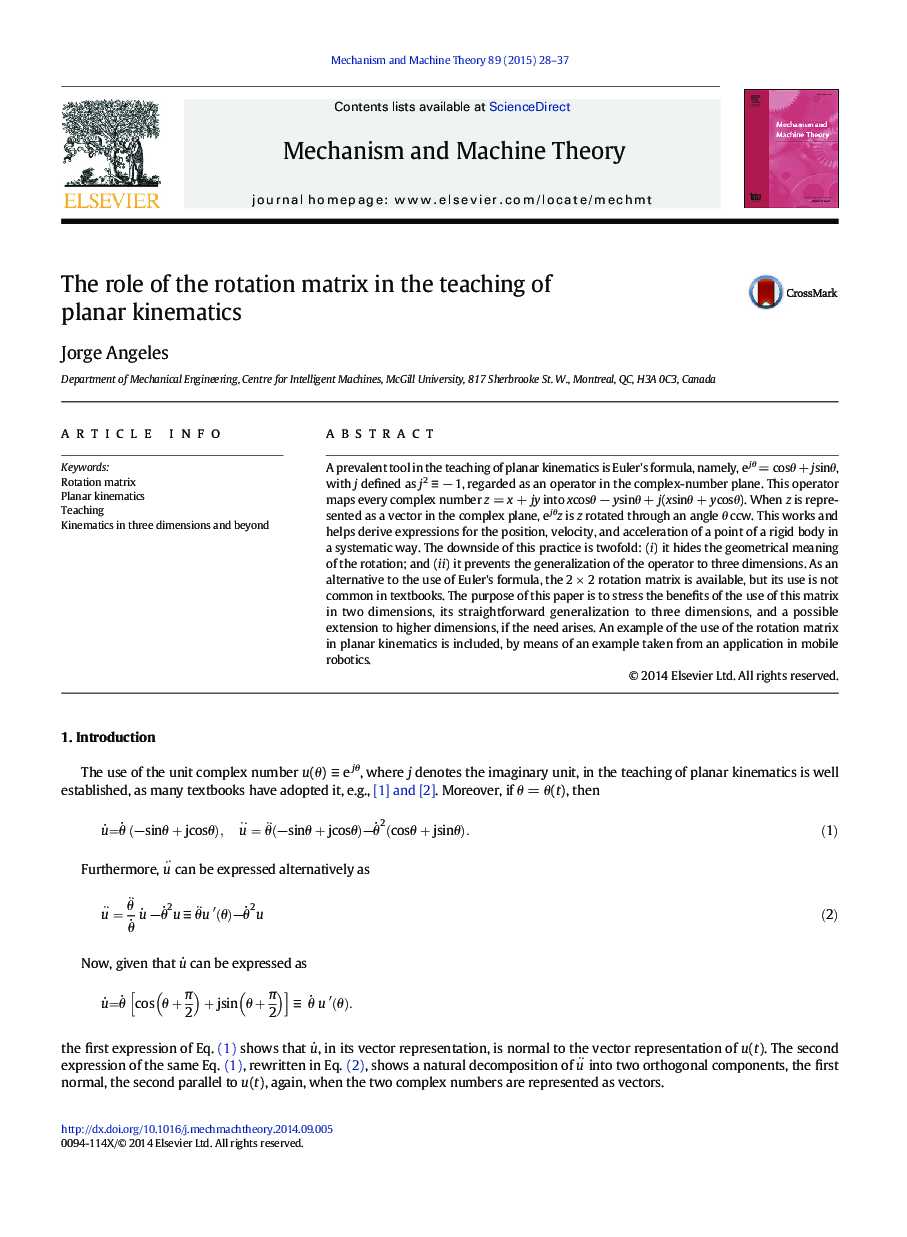| Article ID | Journal | Published Year | Pages | File Type |
|---|---|---|---|---|
| 801722 | Mechanism and Machine Theory | 2015 | 10 Pages |
•The teaching of planar kinematics based on complex numbers vs. the 2 × 2 rotation matrix is the subject of the paper.•The shortcomings of complex numbers are discussed.•The 2 × 2 rotation matrix allows a natural extension to three and higher dimensions.
A prevalent tool in the teaching of planar kinematics is Euler's formula, namely, ejθ = cosθ + jsinθ, with j defined as j2 ≡ − 1, regarded as an operator in the complex-number plane. This operator maps every complex number z = x + jy into xcosθ − ysinθ + j(xsinθ + ycosθ). When z is represented as a vector in the complex plane, ejθz is z rotated through an angle θ ccw. This works and helps derive expressions for the position, velocity, and acceleration of a point of a rigid body in a systematic way. The downside of this practice is twofold: (i) it hides the geometrical meaning of the rotation; and (ii) it prevents the generalization of the operator to three dimensions. As an alternative to the use of Euler's formula, the 2 × 2 rotation matrix is available, but its use is not common in textbooks. The purpose of this paper is to stress the benefits of the use of this matrix in two dimensions, its straightforward generalization to three dimensions, and a possible extension to higher dimensions, if the need arises. An example of the use of the rotation matrix in planar kinematics is included, by means of an example taken from an application in mobile robotics.
